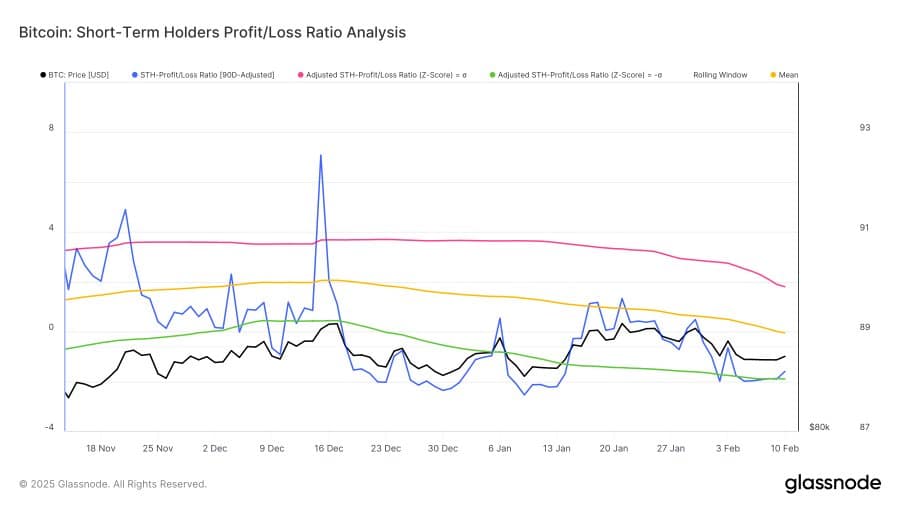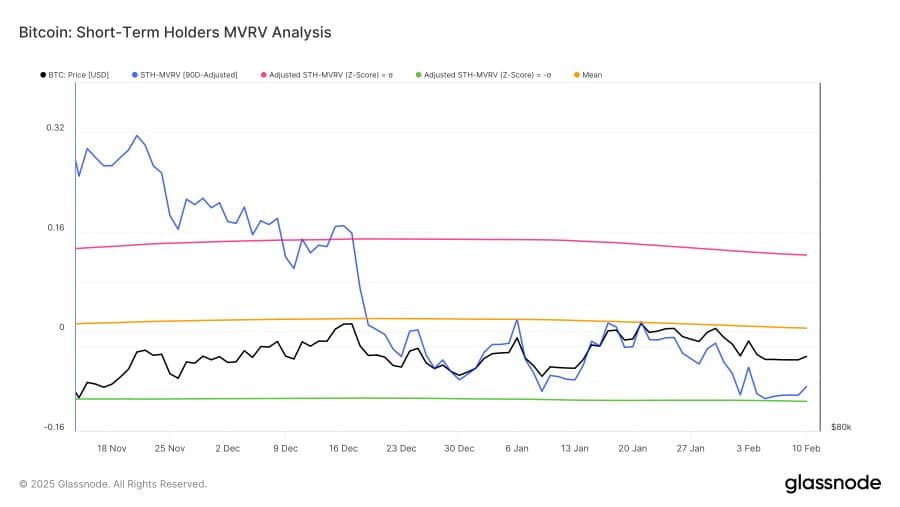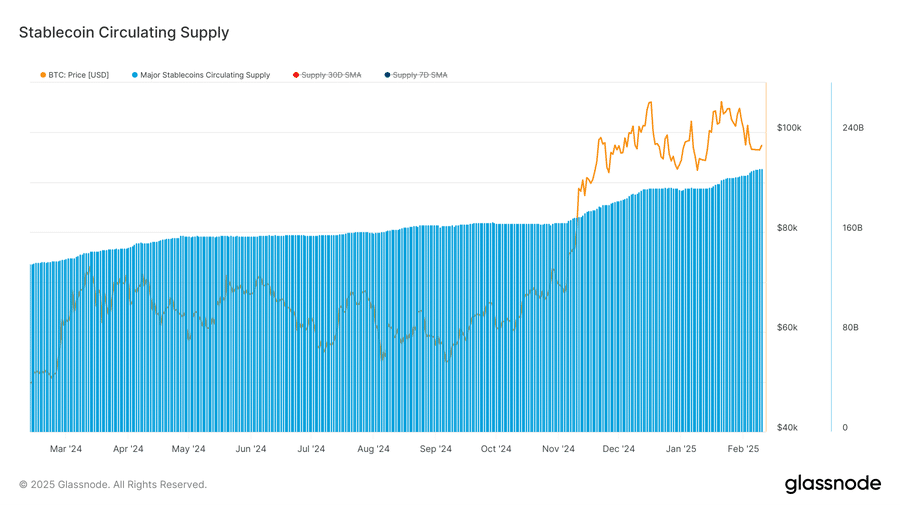-
As Bitcoin (BTC) shows signs of market stabilization, short-term holders might be inclined to hold onto their assets longer amidst declining profit margins.
-
Factors contributing to this potential shift include lower selling pressures and increasing capital flows through stablecoins into the crypto ecosystem.
-
According to COINOTAG, “As profitability wanes, holding becomes a more attractive option, exerting potential upward pressure on BTC prices.”
Bitcoin’s recent market fluctuations suggest short-term holders may retain their investments longer, driven by declining profit margins and stablecoin inflows.
Market reset signals potential upside
Data from Glassnode indicates a reset in the Bitcoin market, as shown by the current Short-Term Holders Profit/Loss Ratio of 1.08. This ratio suggests that short-term holders, defined as those who hold BTC for under 155 days, are experiencing slight profits, with marginally more being sold at a profit compared to at a loss.
Profit ratios and market dynamics
The significance of the 1.08 ratio is evident; for every $1.08 in BTC sold at a profit, only $1 is sold at a loss. This slight profit margin is critical as it reflects investor sentiment. When this profit-taking metric drops below its 90-day average, a notable shift towards a more neutral market occurs, indicating a stabilizing effect on BTC prices.

Source: Glassnode
Declining profits could trigger a supply squeeze
In alignment with the market reset, the Market Value to Realized Value (MVRV) ratio for short-term holders of BTC has dipped below its 90-day average. Currently, the STH-MVRV stands at 1.05, indicating that BTC is trading only slightly above the average purchase price for these short-term investors.

Source: Glassnode
This decline in the MVRV often results in reduced selling pressure, as holders anticipate higher future prices, thereby decreasing the circulating supply of BTC. Such dynamics create a foundation for potential capital appreciation.
Stablecoin inflows point to increased buying power
This year, the surge in stablecoin supply indicates significant liquidity entering the crypto space. A remarkable increase of approximately $16.97 billion has been observed, growing the total supply from $194.2 billion to $211.2 billion in just a few months, predominantly in February.

Source: Glassnode
The rising stablecoin supply is a robust indicator of increasing liquidity, which typically precedes higher purchasing activity in crypto markets. With Bitcoin’s growing role as a strategic asset across various sectors, this influx could bolster its market position.
Conclusion
To summarize, the observed dynamics among short-term holders, coupled with the substantial inflow of stablecoins, present a conducive environment for Bitcoin’s price to stabilize and potentially rally. The declining profit margins among short-term holders may limit selling pressure, setting a stage for future appreciation as liquidity in the market remains robust.
